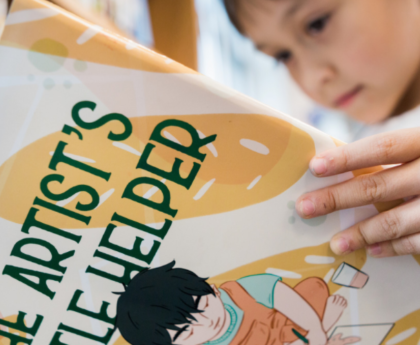The teacher’s email arrives: “We’d like to discuss moving your child to Tier 2 interventions.” Your heart races. What does that mean? Is your child failing? Are they being held back? Should you worry?
Take a deep breath. Response to Intervention isn’t a label or a punishment. It’s actually a framework designed to help your child get the exact support they need, when they need it. Let’s walk through what RTI really means for your family.
What is Response to Intervention?
Response to Intervention, often called RTI, is a multi-tiered approach schools use to identify and support students who need extra help with reading, writing, or math. Think of it as a safety net with several layers.
The core idea is simple. All students receive quality classroom instruction. Teachers monitor progress regularly. When a child struggles despite good teaching, the school provides additional support. If that support isn’t enough, more intensive help becomes available.
RTI focuses on early identification and prevention. Rather than waiting for children to fail dramatically before offering help, schools intervene at the first signs of difficulty. This proactive approach prevents small problems from becoming major obstacles.
The system operates on data, not guesswork. Teachers use regular assessments to track your child’s progress. These assessments show whether interventions are working. If progress stalls, the team adjusts the approach. If your child catches up, they return to regular classroom instruction.
This framework benefits everyone. Strong students continue progressing in the regular classroom. Struggling students get targeted help before falling too far behind. Teachers can differentiate instruction based on actual student needs rather than assumptions.
The Three Tiers Explained
RTI typically includes three tiers of support. Each tier provides increasingly intensive instruction.
Tier 1 represents the foundation. This is the high-quality classroom instruction that all students receive. Your child’s teacher uses research-based curriculum and teaching methods. She monitors all students’ progress through regular assessments.
In an effective Tier 1 classroom, the teacher uses systematic phonics instruction. She teaches the foundational skills all readers need. She differentiates instruction to meet diverse learning needs within the classroom. About 80 percent of students succeed with Tier 1 instruction alone.
Tier 2 provides targeted small-group intervention. Your child still receives Tier 1 classroom instruction, but also gets additional support. This might happen during a separate intervention block or during centers time.
Tier 2 interventions typically involve small groups of three to five students with similar needs. A teacher or specialist works with this group several times per week, focusing on specific skills. Sessions usually last 20 to 30 minutes.
The instruction is more explicit and focused than Tier 1. If your child struggles with phonics, the Tier 2 group practices phonics intensively. If decoding is the issue, that becomes the focus. Interventions target identified gaps.
About 15 percent of students need Tier 2 support at some point. Being in Tier 2 doesn’t mean your child is failing. It means they need some extra practice in specific areas.
Tier 3 offers intensive, individualized intervention. This is the most targeted support available within the RTI framework. Your child receives one-on-one or very small-group instruction from a specialist.
Tier 3 interventions happen more frequently and for longer periods. Your child might work with a reading specialist daily for 45 minutes or more. The instruction is highly customized to your child’s specific needs.
Only about 5 percent of students require Tier 3 support. At this level, schools often conduct more comprehensive evaluations. They want to understand exactly why your child is struggling and whether additional services might help.
How Schools Determine Tier Placement
Schools use multiple data points to determine which tier fits your child’s needs. No single test score decides placement.
Teachers start with universal screening. All students take brief assessments two or three times per year. These screenings identify children who might need additional support. Common screening tools measure phonemic awareness, phonics skills, fluency, and comprehension.
Classroom performance matters too. Your child’s teacher observes their daily work. Can they complete assignments independently? Do they understand lessons? How does their progress compare to grade-level expectations?
Progress monitoring provides ongoing data. Once interventions begin, teachers assess your child’s skills regularly—sometimes weekly. This frequent checking shows whether the intervention is working.
Schools look at the rate of progress, not just current achievement. A child reading below grade level but making steady gains might stay in Tier 2. A child closer to grade level but making no progress might need Tier 3 support.
The team considers multiple factors. Does your child have attendance issues affecting learning? Are there vision or hearing concerns? Has there been family stress or trauma? Understanding the whole picture helps schools provide appropriate support.
Your input matters in these decisions. You know your child best. Share what you observe at home. Does reading cause tears and frustration? Does your child avoid books? This information helps the team understand your child’s needs.
What Quality Intervention Looks Like
Not all interventions are equally effective. Understanding what quality support should include helps you advocate for your child.
Effective interventions use systematic, explicit instruction. The teacher doesn’t assume your child will figure things out independently. They directly teach specific skills in a logical sequence, model skills clearly, and provide guided practice.
Good interventions focus on foundational skills. If your child struggles with reading, quality intervention addresses phonemic awareness and phonics systematically. These are the building blocks of reading that research shows all readers need.
The instruction should be intensive. Meeting once a week for 15 minutes won’t create significant change. Your child needs frequent, focused practice. Most effective interventions happen at least three to five times per week.
Progress monitoring must happen regularly. The teacher should assess your child’s skills weekly or biweekly. Without this data, no one knows whether the intervention is working. Regular monitoring allows quick adjustments when needed.
Your child’s intervention should align with their specific needs. If phonics is the problem, phonics should be the focus. If fluency lags, fluency practice matters most. Generic “reading help” that doesn’t target identified gaps wastes precious time.
The intervention should supplement, not replace, core instruction. Your child still needs comprehensive literacy instruction in the classroom. Intervention provides additional, targeted practice on challenging skills.
Your Role in the RTI Process
As a parent, you play a vital part in your child’s success within the RTI framework. Your involvement and advocacy make a real difference.
Stay informed about your child’s progress. Ask for regular updates. Request to see progress monitoring data. You should understand not just whether your child is in Tier 2 or 3, but what specific skills they’re working on and how they’re progressing.
Communicate openly with teachers and specialists. Share what you observe at home. If interventions are causing stress, speak up. If you see improvements, celebrate those wins with the team.
Ask questions when things are unclear. What curriculum or program is being used? How often does my child receive intervention? What specific skills are being taught? How long do we expect this support to continue?
Request documentation. Keep records of assessments, progress reports, and communication with the school. This paper trail becomes important if your child needs more intensive support later.
Support learning at home, but don’t try to replicate the intervention. You’re not the intervention specialist. Your job is to encourage your child, read together for enjoyment, and maintain positive attitudes about reading.
Be patient but also appropriately assertive. Change takes time, but you should see progress within eight to ten weeks of consistent intervention. If you don’t see improvement, it’s appropriate to request a team meeting to discuss next steps.
When RTI Isn’t Working
Sometimes children don’t respond adequately to intervention. This doesn’t mean failure—it means your child needs a different approach or additional evaluation.
If your child receives consistent, quality intervention for several months without meaningful progress, several possibilities exist. The intervention might not match your child’s needs. The frequency or intensity might be insufficient. Or your child might have an underlying learning disability requiring different support.
You can request a formal evaluation at any time. Schools must respond to written requests for evaluation within specific timelines. An evaluation looks more deeply at your child’s learning profile and can identify specific disabilities.
Some schools hesitate to evaluate, preferring to extend RTI interventions. You have the right to push back. Federal law requires schools to evaluate when there’s reason to suspect a disability. Lack of progress despite quality intervention is one such reason.
An evaluation doesn’t automatically mean special education placement. It simply provides more information. That information helps everyone understand your child’s needs and create appropriate support.
RTI and special education aren’t opposing paths. They can work together. A child might receive both Tier 2 interventions and specialized instruction through an Individualized Education Program (IEP).
The goal is always the same: getting your child the support they need to become a confident, capable reader. Whether that happens through RTI alone or through a combination of RTI and special education services depends on your individual child.
Move Forward with Confidence
Understanding RTI empowers you to be an effective advocate for your child. You can ask informed questions. You can recognize quality intervention. You can work collaboratively with your school while ensuring your child’s needs are met.
Remember that being in Tier 2 or Tier 3 doesn’t define your child. It simply means they need additional instruction in specific areas. Many children move through tiers and back to Tier 1 as they master challenging skills.
Your child’s reading struggles are not permanent. With the right support—whether through school interventions, home practice, or additional resources—your child can develop strong reading skills. Progress might be slower than you’d like, but progress is absolutely possible.
Strengthen Reading Skills at Home
While your child receives school interventions, you can support their reading development at home with the right tools. Reading.com provides systematic, science-based instruction that reinforces the foundational skills struggling readers need most. Our program complements school interventions by offering additional practice with phonemic awareness, phonics, and decoding—exactly the skills that make the biggest difference for children who are learning to read. Start your 7-day free trial and give your child extra practice that actually works.





